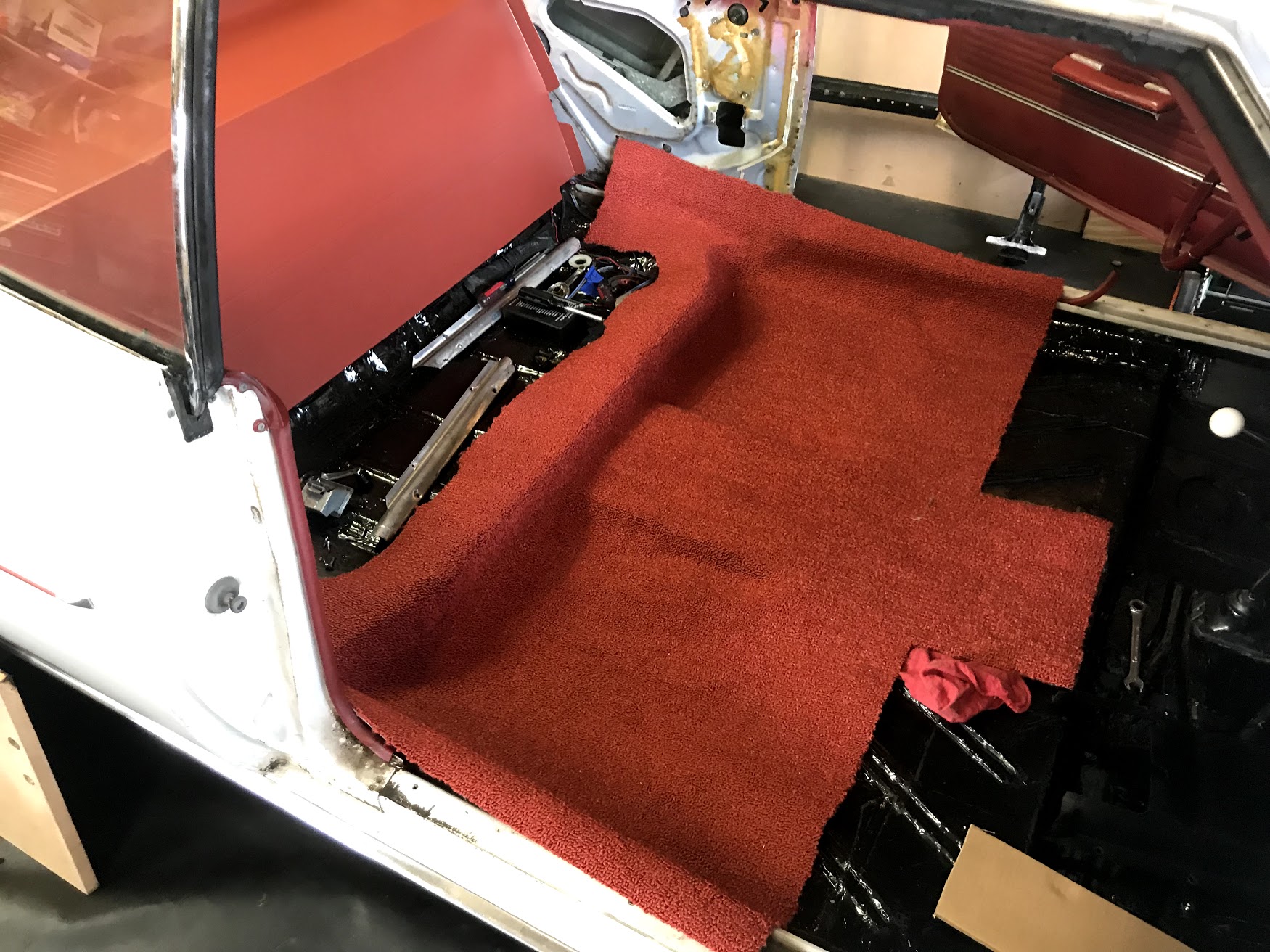5 tips for installing new carpet in your vintage car
Installing the carpet in your classic car seems like a simple task: just lay the woven material on the floor pans and then move on with your day. It’s not, however, quite that easy. I know this because I recently tackled this project on my 1965 Chevy Corvair. Here are a few tips to make your carpet install less of a headache than what I experienced.
1. Organize your parts—outside of the car
This one seems obvious at first glance, but I promise you will fall into the trap of “I’ll just lay these screws out in order of how I removed them, then I’ll know where they go and how to put them back.” I promise you are wrong. Also, you probably lined those screws up in a place that’s ultimately in the way of something else you’re working on, so you’ll have to move them. Grab a sandwich bag and a notecard to tag and bag fasteners and other parts as they come off, then place them in a safe place. You’ll thank yourself later.
2. Buy the fitted carpet
If there is an option between molded carpet and standard flat carpet, buy the molded. It’s really tempting to be budget conscious and get the standard carpet, and then try to massage it to fit. It sounds good on the surface, but the fitted carpet will require significantly less work to make it fit correctly, and it often looks better once you’re finished.
3. Be sharp
Sharp tools are the best to work with. It sounds counterintuitive, but putting effort into forcing a dull blade to cut is dangerous. If the blade cuts easily you can focus more on controlling the cut rather than hoping it cuts where you want. Grab a new pair of shears or at least a pack of fresh razor blades. It’s cheap, and accurate cuts make for a better fit.
4. Start with small cuts
Using those sharp tools will allow small and more accurate cuts, so put them to work. If making a cut for a shifter or pedal, start with a small “X” cut. This will allow you to stick a finger or tool through and make sure the cut is properly located. If incorrect, a small crosscut can be patched on the backside with carpet seam tape. To locate some cuts, the old carpet can be used as a template, use painters tape (or another tape with low adhesion) to outline the placement on the new carpet before placing in the car, then confirm their location is correct once the new carpet is situated.
5. Don’t be afraid of heat
This one is scary the first time you try it, but done correctly it can make a real difference in final finish. There will inevitably be places where fasteners or other hardware will need to pass through the carpet. You could make a small cut and hope the bolt won’t create a pull on the woven material, or you can use a soldering iron or hot punch to melt an appropriately sized hole. With the edges melted, the woven fabric won’t pull or interfere with a fastener. Practice on a piece of scrap material first to know how the material reacts.
There are plenty of other tips, but these are the ones I wish I knew before this last project. If you have others, be sure to leave them in a comment below so other can learn from your experience.







There’s nothing that improves the look and feel of an interior than fresh quality carpet. IMO, NEVER opt for non-molded carpet when molded is available. Trust me, it is not worth the extra work for the few dollars you save. An absolute must for getting the best fit and layout is to let the carpet sit in direct sunlight for several hours in order to relax it. Obviously you want to do this when it’s above freezing, and the warmer the better. Also, don’t stuff too much of the “overage” into kick panels and under sill plates. A little is fine, but too much creates stress on those old plastic parts, and next thing you know, you’re ordering inferior aftermarket replacement plastic pieces. Finally, once the carpet is laid out how you want it, use a sharp pick or punch to locate seat track bolt holes and seatbelt bolt holes and leave it in while you make tiny “X” cuts around the punch in order make a hole big enough for the bolts to fit through. Because most bolt holes are hidden, you can cut out a bit more material around the hole and no one will ever see it.
Never run a drill into loop pile carpet. It will pull a row of loops out a foot long before you can stop the drill thereby running your brand new carpet. I have not tried drill cur pile but it seems like it would be ok.